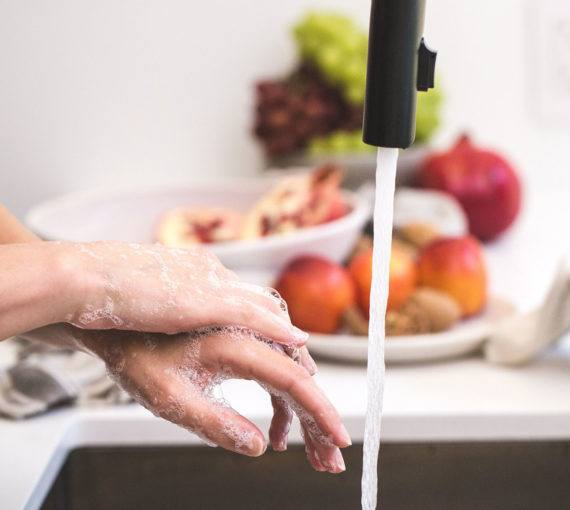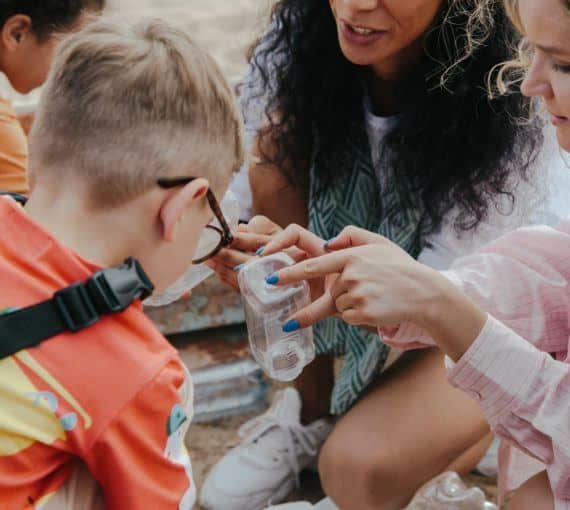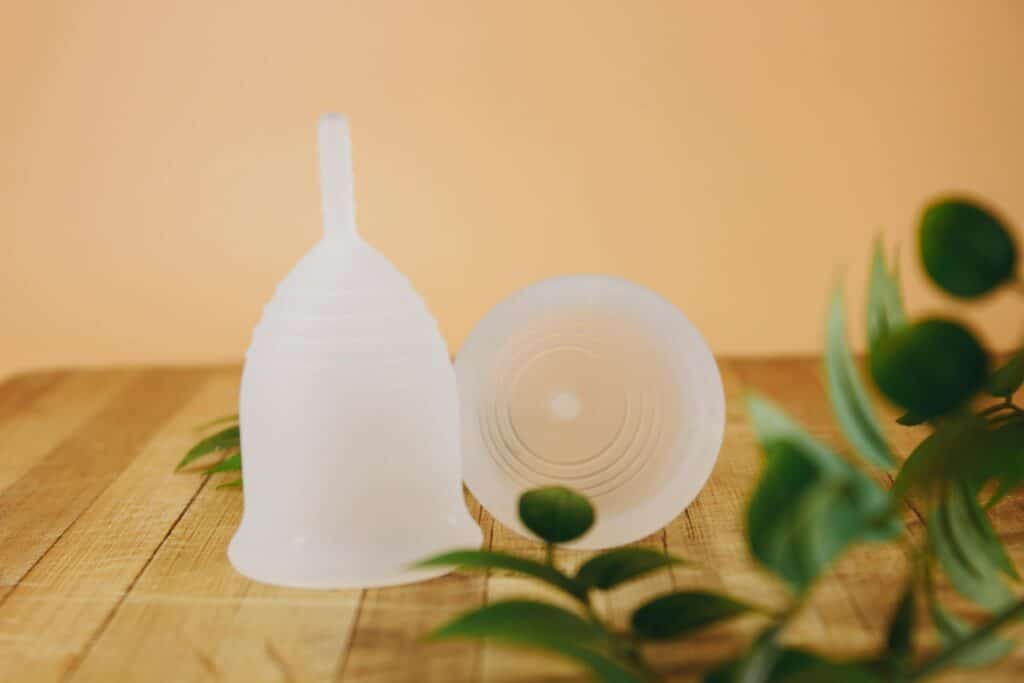
A menstrual cup is an eco-friendly alternative to disposable tampons and pads that will last up to 10 years. (Photo: Tubarones Photography via Pexels)
People who menstruate will spend about 39 years of their lives on their cycle. They may use between 10,000 and 15,000 disposable menstrual products. That’s a lot of waste!
Though nearly half of the world’s population menstruates, this natural cycle is still riddled with taboos and stigmas that hinder important discussions, including about the environmental impact of disposable products and access barriers to sustainable menstrual products.
Period pollution: The environmental impact of disposable menstrual products
Production and disposal of single-use menstrual products such as tampons and pads contribute significantly to environmental degradation.
Menstrual health and hygiene are intricately linked to environmental issues, climate change and sustainability.
— Laura Del Duca and Carla Liera, Stockholm Environment Institute
Water use and fossil fuels
Disposable tampons and pads are mainly made of cotton and plastic. Both materials require large quantities of water and fossil fuels to manufacture. Making one kilogram of cotton uses about 10,000 litres of water. That means one box of 20 tampons uses about 1,000 litres of water!
Waste
Used menstrual products are classified as “medical waste,” so they don’t have to be tracked. Some 20 billion pads and tampons are dumped into North American landfills each year. Improper disposal — e.g., flushed down toilets — pollutes water and strains sewage systems. According to a 2022 study, single-use menstrual products and packaging are of the most found waste on beaches and in the ocean.
Microplastics
Disposable menstrual pads are 90 per cent plastic. They take about 500 to 800 years to break down in landfills. Worse — plastic never truly degrades, just breaks down into microplastics. Microplastics from disposable menstrual products and their plastic packaging end up in waterways, harming marine ecosystems and ocean biomes.
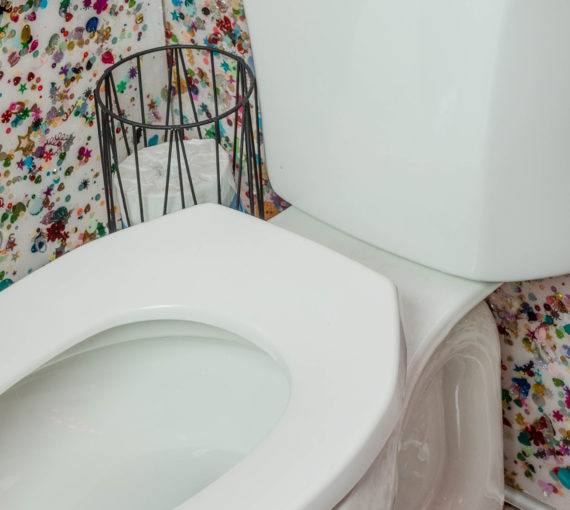
What not to flush
The toilet may seem like a magical portal to whisk away waste. Truth is, what gets flushed can have far-reaching consequences.
Impacts of disposable menstrual products on human health
This is a topic of growing concern, highlighting the need for safer menstrual care options.
Reproductive harm
To create a “pristine white look,” most tampons and pads are bleached. This can create highly toxic dioxins. Exposure to dioxins can cause cancer, reproductive and developmental problems, immune system damage and hormonal interference.
A 2019 study tested 11 brands of menstrual pads for four kinds of phthalates and three kinds of volatile organic compounds. Two types of phthalates and VOCs were detected in all the brands of pads tested. California regulators and European authorities classify phthalates as toxic to reproduction and development. The VOCs found are linked to skin irritation, allergic reactions, dizziness and central nervous system and kidney damage.
PFAS
Lab analyses commissioned between 2020 and 2022 found PFAS in 48 per cent of sanitary pads, incontinence pads and panty liners and 22 per cent of tampons. PFAS, a.k.a. “forever chemicals,” have been linked to a range of health issues, from decreased fertility and increased risk of certain cancers to developmental delays, low infant birth weights and hormonal disruption.
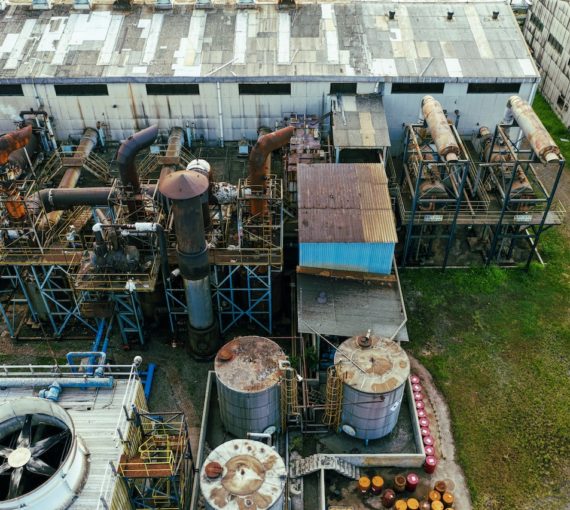
Let's break the toxic chain of "forever chemicals"
Prioritizing profit and economic growth over human health and the environment is a short-sighted and increasingly costly way of living that threatens our very survival. The convenience offered by these chemicals is not worth the significant long-lasting dangers. It’s time to make “forever” chemicals a thing of the past.
Green your cycle with reusable menstrual products
If you can get reusable menstrual products, making the switch can affect your environmental impact and your health. These alternatives significantly reduce waste and help lessen the burden on landfills, the ocean and ecosystems. Reusable products also contain fewer irritants and chemicals, including “forever chemicals” like PFAS.
They may cost more up front, but over the long-term, reusable menstrual products will save you money.
Note: Switching from disposable menstrual products to reusables isn’t easy or practical for everyone. Menstrual health and hygiene practices are deeply personal and influenced by many factors. Do what you can, with what you have.
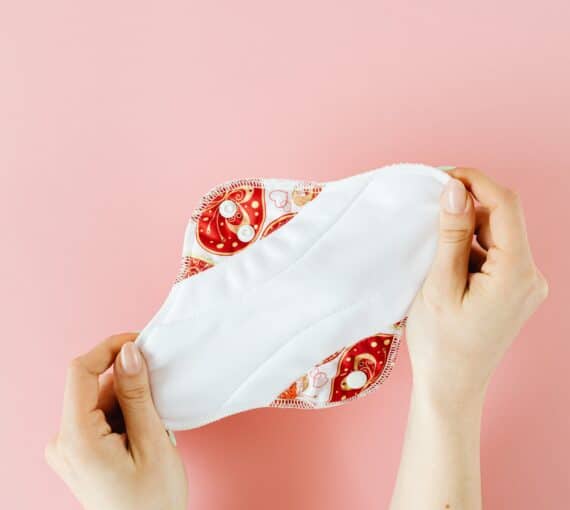
Reusable pads or liners
Washable menstrual pads or liners, typically made from a combination of natural and synthetic materials, are a practical alternative to disposable counterparts. Absorbent layers are usually cotton, bamboo, or hemp. Snap fasteners, edging and backing materials often contain synthetic fibres like nylon and polyester for durability.
Cost: $10 to $30 per pad
Lifespan: Five years
Use and care:
- Wear the same way you would a disposable pad.
- When soiled, launder with eco-friendly laundry soap.
Pros:
- Gender neutral designs.
- Various sizes, shapes and materials give users flexibility to choose what best suits preferences and needs.
- Often made from breathable, non-toxic materials, reducing the likelihood of irritation or allergic reactions.
- Can be used for incontinence.
- If your pad is made of organic, biodegradable fibres, cut layers into small pieces and compost if you can. Parts that are synthetic or that can’t be separated go in the garbage.
Cons:
- Reusable pads require proper cleaning and maintenance, which can be an inconvenience and/or a barrier.
- High upfront cost.
- Can require travelling with a leak-proof bag for soiled pads.
- May be hard to find, depending on where you live.
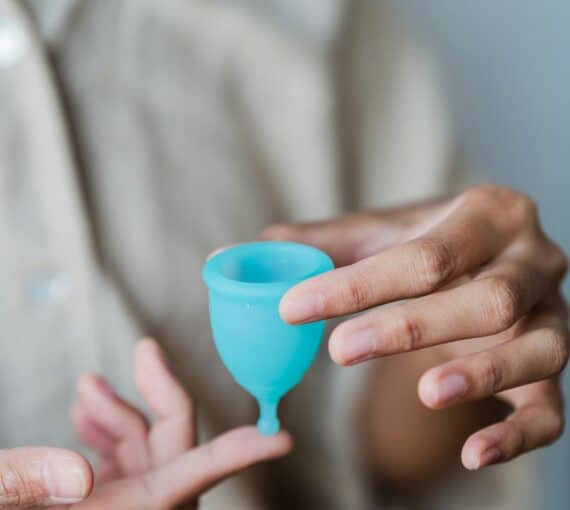
Menstrual discs and cups
Menstrual cups look like small funnels with stems for easy removal. Menstrual discs are flat or bowl-shaped. Both are usually made of medical-grade silicone.
Though silicone is a reusable alternative, it does not biodegrade and can’t be recycled, so it’s not entirely an eco-friendly solution.
Cost: $30 to $50
Lifespan: Five to 10 years
Use and care:
- Insertion and wear are unique to each person.
- Care depends on material used to make the disc or cup.
- Sterilize after use in boiling water.
- Wash between uses with castile soap.
- Read instructions for wear and care tips.
Pros:
- Can be worn for up to eight to 12 hours.
- Easy to clean.
- Can be worn while submerged in water (e.g., bathing, swimming, etc.).
- Usually made of highly durable materials that can last for years.
Cons:
- Limited size options.
- For some, learning how to use is hard.
- Silicone can’t be easily recycled.

Menstrual underwear
Menstrual underwear is designed to absorb flow without use of other products. It can also be an extra layer of protection when using other products.
Cost: $30 to $60 per pair
Lifespan: Two years
Pros:
- Gender neutral.
- Easy to use.
- Most brands use comfortable, breathable, moisture-wicking fabrics.
Cons:
- High upfront cost.
- Can be made of non-biodegradable, synthetic fibres.
- Some contain PFAS.
Eco-friendly disposable tampons and pads
Reusable menstrual products may not be accessible or suit everyone’s needs.
If you use disposable tampons and pads:
- Choose organic cotton options, free from perfumes and dyes. Cotton biodegrades quickly. Synthetic, petroleum-based fibres mostly don’t.
- Look for plastic-free disposable options.
- Support brands with sustainable practices. Look for certifications like GOTS (Global Organic Textile Standard) for cotton.
How climate change affects menstrual sustainability
As climate change makes extreme weather events such as droughts and floods more frequent, so do the difficulties of managing menstrual health. Such conditions limit access to crucial resources such as water, sanitation, infrastructure, safe disposal options and menstrual products.


